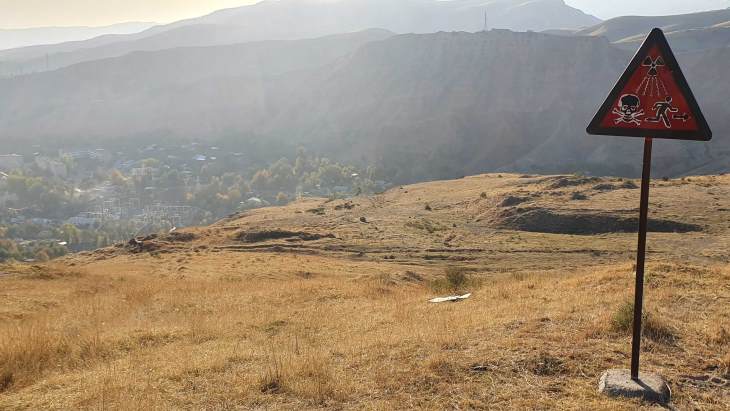Remediation works at Mailuu-Suu - the largest uranium legacy site in Kyrgyzstan - are set to begin following the allocation of a grant of EUR23 million (USD25 million) from the Environmental Remediation Account for Central Asia (ERA), managed by the European Bank for Reconstruction and Development (EBRD).

Mailuu-Suu (Image: WNN)
In the Mailuu-Suu area, uranium was mined and milled between 1946 and 1967 as part of the Soviet nuclear programme. During this period, some 10,000 tonnes of uranium oxide were produced there. The underground mines are subdivided into five mine fields and are accessible via three shafts. The Kara Balta Mining Combine was set up in the 1950s to mine and treat this ore in the north, near Bishkek.
Many unsecured deposits of uranium tailings on the steep and unstable mountain slopes around Mailuu-Suu (a former closed city) pose serious risks to the health of the local population and the environment. In addition, groundwater contaminated by mining waste can pose a risk when used for drinking and irrigation.
Radioactive substances are currently stored in 23 tailings ponds (total volume about 2 million cubic metres) and 13 mining debris heaps (total volume about 0.9 million cubic metres) situated along the Mailuu-Suu River, which feeds into the Syr Darya River. Some of these tailings have already been damaged by landslides, mudslides and floods, and some are in high-risk areas where major landslides are expected.
The ERA grant agreement - which will allow the commencement of seven years of remediation works - was signed on 16 May by Boobek Ajikeev, Kyrgyz Minister of Emergency Situations, and Balthasar Lindauer, director of the EBRD's Nuclear Safety Department.
The grant of EUR23 million, the largest since the establishment of the ERA, will help to stabilise and cover the radioactive tailings located along the Mailuu-Suu River. The planned soil covers will be 2 metres thick. About 350,000 cubic metres of tailings need to be relocated to a safe disposal site. The project will also finance the rehabilitation of contaminated land and water resources in the area.
"This is the third such site to be remediated in the Kyrgyz Republic following the successful completion of similar work at former uranium-mining locations in Shekaftar and Min-Kush in spring 2022," the EBRD noted. "The project will serve as a model for initiatives in other parts of Central Asia, where the issue of uranium legacy sites still needs to be addressed."
Central Asia served as an important source of uranium for the former Soviet Union. Uranium was mined for more than 50 years and uranium ore was also imported from other countries for processing, and large amounts of radioactively contaminated material were placed in mining waste dumps and tailing sites. Most of the mines were closed by 1995 but very little remediation was done before or after the closure of the mining and milling operations. The contaminated material is a threat to the environment and the health of the population. The hazards include the possible pollution of ground and surface water in a key agricultural centre of the region.
The EBRD in 2015 established the ERA, at the request of the European Commission, to tackle this legacy. The ERA, which became operational in 2016, is supported by contributions from the European Commission, Belgium, Lithuania, Norway, Spain, Switzerland and the USA.
In August 2017, the Kyrgyz government ratified a framework agreement with the EBRD, which had been signed in January of that year. Ratification of the agreement meant all the basic conditions were in place for remediation work to begin at several uranium legacy sites in the country.
Researched and written by World Nuclear News